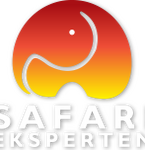
The Classic Kenyan Safari
This safari takes you around the fantastic country of Kenya, where you will be enriched by its unique animal life and very varied landscapes, nature and scenery all of the highest calibre– and on both sides of the Equator.
Small group safari with departures every Sunday throughout the year
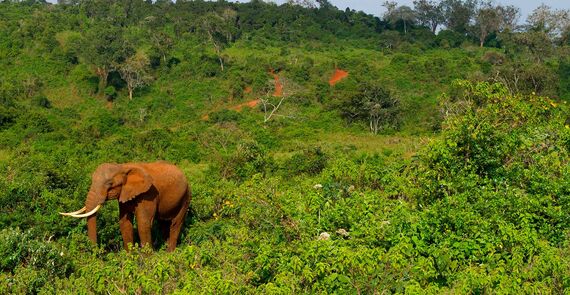
Tour Highlights
- Very varied scenery and landscapes with all the classical animals plus a number of specialities
- The wonderful bush-savannah of Samburu and Buffalo Springs
- Lush forests seen from a tree-top hotel in the Aberdare-highlands
- Lake Nakuru national park with its beautiful flamingo filled lake
- End with some eventful days in the animal rich grass savannah of the Masai Mara
This safari includes four of Kenya’s most wonderful and very different safari areas. You will get a great insight into just how varied Kanya’s landscapes and nature are, and how rich and diverse the animal life that lives here can be.
The lush Aberdares and the beauty of Samburu
After touching down in Nairobi you will head for the beautiful and lush Aberdare-highlands, where you will have time to relax after your flight. From the Aberdares your tour goes north to the rugged, but eternally beautiful Samburu, before again heading for the dense forests of the Mount Kenya area where you will stay in a lodge in the forest.
Experience the Rift Valley and the magical Masai Mara
In the Rift Valley you will experience Lake Nakuru- with its many flamingos being one of its many attractions. Your safari adventure ends in the magical Masai Mara, Kenya’s part of the Serengeti-ecosystem, where you can still feel the Kenya that was so much loved by Karen Blixen.
Good accommodation, perfectly located
Naturally we have chosen accommodation of a high standard, which of course is also perfectly placed in the different areas. In this may you can be sure of having the best chance of experiencing the nature and wildlife at very close quarters.
Possibility for a beach holiday on the shores of the Indian Ocean
After your safari you can, for example, book a beach holiday next to the Indian Ocean. From the Masai Mara you can choose to fly directly to Nairobi or in just two hours travel directly to the coast. By flying directly to the coast you can save a good 10 hours of transport time when compared to driving to Nairobi and then flying from there. This must be booked and paid for before your departure from home.
DAY TO DAY PROGRAMME
Itinerary
DAY 1: DEPARTURE FROM HOME AIRPORT
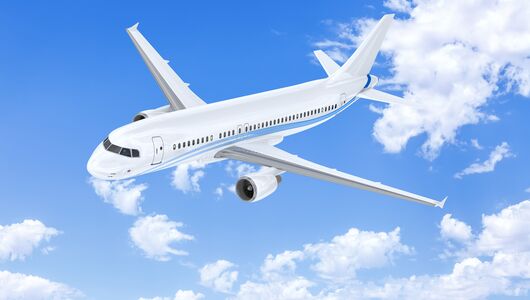
Depart from Europe for Kenya, change flight at a major hub if necessary.
We fly exclusively with scheduled flights of a high standard, which include meals, beverages and entertainment on your flight to Africa.
DAY 2: ARRIVAL IN NAIROBI AND TRANSFER TO THE ABERDARES
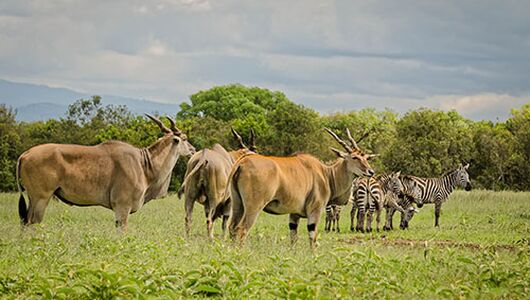
Arrive in Nairobi in the early morning, from here we will drive you to our nearby lounge. Here you will have the chance to change clothes and freshen up and even store extra baggage if you are going on a beach holiday after your safari.
From Nairobi you will, together with the rest of your small group, set off for the lush Aberdare highlands. The journey will take around four hours and takes you through beautiful and fertile farmlands. The drive to the highlands offers many changes of scenery, and many small villages and market stalls, along the way.
If the weather is clear you will also enjoy beautiful views of Mount Kenya.
You will arrive at the Aberdare Country Club in time for lunch at the lodge, which oozes with the charms of Kenya’s colonial past.
You have the rest of the day to relax, enjoy the lodge’s beautiful park-like gardens and its rich animal life, or enjoy a dip in the swimming pool.
Overnight at the Aberdare Country Club with full-board.
DAY 3: FROM THE ABERDARES TO SAMBURU
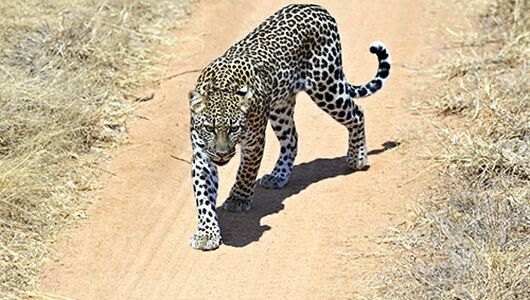
After breakfast you will head north from the beautiful Aberdare-highlands and drive to Samburu, where you will notice a change in climate from the cool highlands, to the hot, dry and very beautiful lowland of the north.
En route, close to the town of Nanyuki, you will cross the equator, before driving further, through the town of Isiolo to the Samburu nature reserve. The last part of the journey will give you a real taste of the dry and very hot surrounding landscape we are heading to.
The coming days offer safari-drives in Samburu, including drives along the brown life-giving waters of the river that flows through the district that attracts many animals. In Samburu you have a good chance of seeing leopard, as well as large herds of elephants, cheetah, lions and giraffe.
Accommodation is provided at Ashnil Samburu Camp, which is located right next to the river. You will sleep in attractive, large safari tents with en suite facilities. All tents have their own terrace and a view over the river.
In the afternoon you go on your first safari-drive in Samburu, where without doubt, an exciting safari adventure awaits you.
Overnight at Ashnil Samburu Camp with full-board.
DAY 4: SAFARI-DRIVES IN SAMBURU
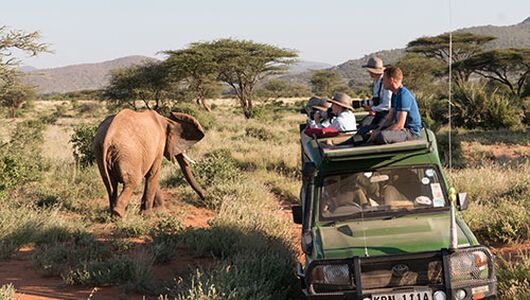
Morning and afternoon safari on the open savanna and the areas of forest that follow the Ewaso Ngiro River, which if the life blood of the whole district. We are sure to find some of the unique animals that this region is famous for, as well as many of the classical and more widespread animals.
You will have the full day to enjoy this beautiful district with its unique fauna.
Overnight at Ashnil Samburu Camp with full-board.
DAY 5: FROM SAMBURU TO THE FORESTS OF MOUNT KENYA
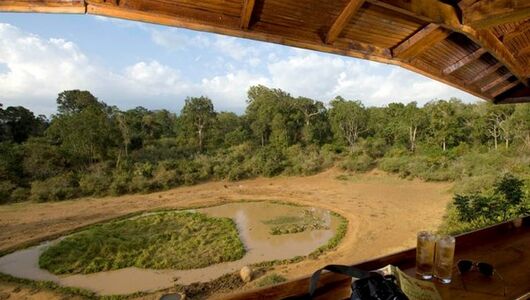
From the hot, scenic lowlands the tour now takes us to the highlands of Mount Kenya, where we will drive through dense, lush forests to where the tree-top hotel, Serena Mountain Lodge, awaits us.
We will arrive in the lodge in time for lunch, which lies on the slopes of Mount Kenya itself.
After we arrive in the hotel we have plenty of time during the rest of the day to watch the wildlife from the many different parts of the hotel - and not least - to soak in the many impressions, sounds and smells of the forest.
On payment of a small supplement it is possible to arrange a walking safari in the forest in the company of a local guide.
Overnight at Serena Mountain Lodge with full-board.
DAY 6: FROM MOUNT KENYA’S FORESTS TO LAKE NAKURU AND THEN LAKE NAIVASHA
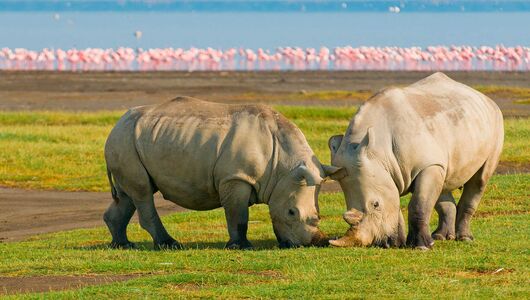
After breakfast we leave the lush highlands and set course to the most famous of all the Rift Valley lakes, Lake Nakuru.
There we start with lunch at Lake Nakuru Lodge, after which we take a safari drive in this small, but extremely charming park. Lake Nakuru is famous for having both white and black rhinos, its large numbers of flamingos and the rare Rothschild-giraffe.
After our exciting safari-drive we will drive to the neighbouring Lake Naivasha, which is just less than an hour away. On the way to Naivasha we will drive past some large flower farms where many of the roses we buy in Europe are grown.
We stay for the night at Lake Naivasha Sopa Lodge, which is situated in a beautiful park like garden on the shores of Lake Naivasha itself. The lodge is often visited by giraffes, zebras and a number of different antelopes that come here to graze. At night hippos also come and visit, which is why you will always be accompanied to your room by a Masai guard in the evening.
Overnight at Lake Naivasha Sopa Lodge with full-board.
DAY 7: FROM LAKE NAIVASHA TO THE MASAI MARA
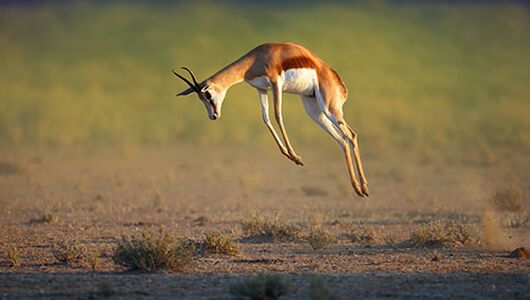
Our route now takes us towards Masai country. After a few hours driving the fertile soils of central Kenya give way to a more savannah-like landscape. Especially once we have passed the busy Masai “capital” of Narok, the countryside quickly becomes more influenced by grass savannah, with acacia trees dotting the landscape, and more frequent sightings of the Masai people and wild animals.
We will arrive in the lodge for a late lunch, and there will be time for a safari-drive in the afternoon.
Overnight in the beautifully situated Ashnil Mara Camp with full board.
DAY 8: SAFARI DRIVES IN THE MASAI MARA
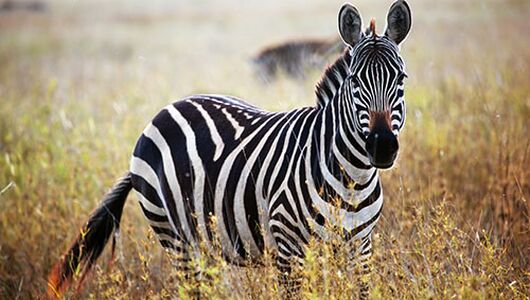
You will go on safari twice today, and you will have the chance of seeing all the animals that you associate with Africa. “The Big Five”: Elephant, lion, leopard, rhino and buffalo are all here, as are cheetah, hyena, wild dogs and large numbers of gazelles, antelope, giraffe, zebra and wildebeest.
In the season from July to October the Mara is host to the great migration of 1.5 million wildebeest and 250,000 zebra. An absolutely extraordinary spectacle.
Overnight in the Ashnil Mara Camp with full board.
DAY 9: FROM THE MASAI MARA TO NAIROBI AND DEPARTURE FOR HOME
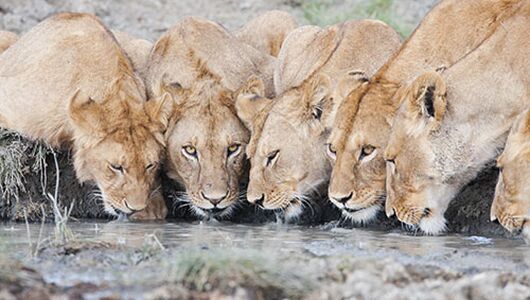
After breakfast you will set off back to Nairobi. The drive will take around 5 hours.
From here you will catch your flight home in the evening. It is possible to add a beach holiday onto this tour.
DAY 10: ARRIVAL HOME
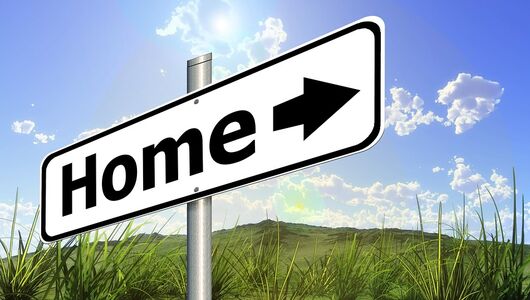
You will arrive back in Europe in the morning.
Accommodation on the tour
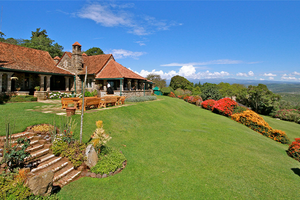
Aberdare Country Club
Aberdare Country Club in Kenya’s central highlands is a forest lodge, built on the slopes of Mweiga Hill in the Abardare Highlands, which is part of the Great Rift Valley. The property still shows signs of its origins as a private country house, built in the style of an English cottage, and is considered part of Kenya’s cultural heritage. Today it is furnished with all modern conveniences.
Read more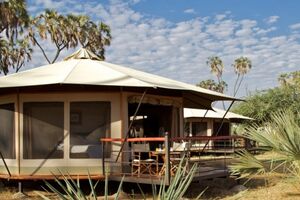
Ashnil Samburu Camp
Ashnil Samburu Camp lies in Buffalo Springs Game Reserve in northern Kenya which gets its name from an oasis of crystal clear water in the western part of the reserve. The Ewaso Nyiro River separates this reserve from the other reserve in the district, namely the Samburu National Reserve.
Read more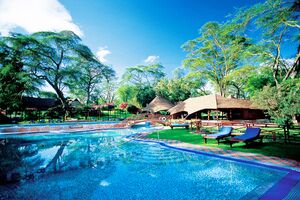
Lake Naivasha Sopa Lodge
Lake Naivasha Sopa Resort in Kenya has been built in an area of 180 acres of grasslands and acacia trees. The resort lies at an altitude of 1900 m on the southern shore of the freshwater Lake Naivasha in the Great Rift Valley. The lush surroundings often attract giraffe and waterbuck, as well as both vervet- and colobus monkeys. At night hippos form the lake often visit to graze.
Read more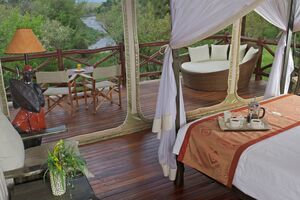
Ashnil Mara Camp
Ashnil Mara Camp is a new lodge built in a prime location for watching the animal life of the Mara Rivers. The camp lies in the heart of Kenya's Masai Mara National Reserve, a place famous for the countless wildebeest and zebra that come here during “The Great Migration” from July to October. The lodge is close to the confluence of the Mara and Talek Rivers which are renowned for the crocodiles and hippos that live in them.
Read moreAttractions on the tour
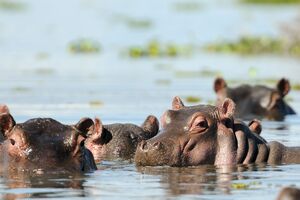
Lake Naivasha
In central Kenya, on the floor of the Rift Valley, lies five large lakes. Of these Lake Naivasha is closest to the capital city of Nairobi which is around 90 km to the north west. Lake Naivasha is a freshwater lake set in very lush surroundings, and taking a boat trip along its shores is one of the big attractions as it is an absolute paradise for birds, including many water birds and the African fish eagle. The lake is also home to a good population of hippopotamus, which you can approach closely by boat, and along its shoreline you can often see giraffe, buffalo and a number of different species of antelopes and monkeys.
Read more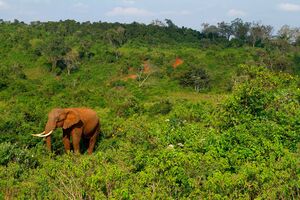
The Aberdares and Mount Kenya Highlands
The central Kenyan highlands are located in two areas of now extinct volcanic activity, a large part of which is now occupied by the Aberdares- and Mount Kenya national parks, some 150-200 km north of Nairobi. The lower parts of these parks, still some 3,000 meters above sea level, are densely forested, while the higher lying areas are mainly large open heathlands. The Aberdares reach an altitude of just over 4,000 meters while the peak of Mount Kenya is the second highest in Africa, at 5,199 meters.
Read more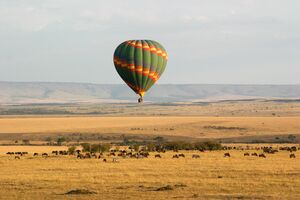
Balloon Safari
Go on a spectacular adventure and experience an African safari from up in the air, in a hot air balloon. Take off is usually just before sunrise, so you can enjoy the first rays of the sun spread a golden light over the plains as you glide silently and wind still over the savannah and its majestic animals.
Read more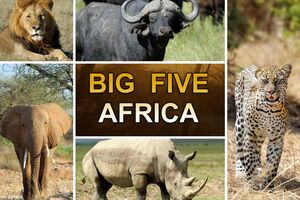
THE BIG FIVE
The Big Five is a historic term that comes from big game hunting. It groups together the five animals that were considered to require the most courage and skill to hunt: Elephant, rhino, buffalo, lion and leopard. The term has been readily adopted by today’s wildlife safaris, on which rifles have been swapped for a camera and animals are only “shot” through a telephoto lens. It is also widely used in the marketing of reserves, camps and lodges, where the “Big Five” can be found, and visitors have a reasonable chance of encountering them.
Read more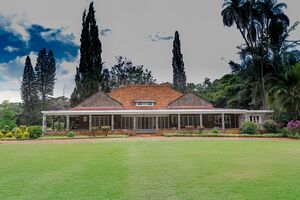
Karen Blixen Museum Nairobi
An absolute must see when travelling in Nairobi, Kenya is the Karen Blixen Museum. The museum is run by the National Museums of Kenya and is located around 10km from the center of Nairobi at the foot of the Ngong Hills. Get a unique insight into Karen Blixen´s experiences and dreams of a life in Africa.
Read more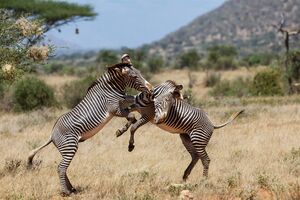
The Samburu
The three reserves north of Kenya’s highlands, Samburu, Buffalo Springs and Shaba, which together cover around 500 km2, have a couple of things in common: from their beautiful dry savannah landscapes, on a clear day you can see the jagged peaks of Mt. Kenyas over 5,000 meters in height, plus the fact that they are all home to a range of special animals, whose colour, shape or patterning is very different from their relatives to the south. The reticulated giraffe is genetically speaking, the subspecies that differs most from other giraffes, while the Grevy´s zebra is larger and has much thinner stripes than other species of zebra. The local gazelle, the gerenuk or giraffe gazelle, has a longer neck than the other species of gazelle, and often stands on its backlegs to feed on leaves in the higher up branches of the trees. The ostriches found here are of the species Somali ostrich, which differ from the Masai ostrich found to the south of the Kenyan highlands by the males having blue legs rather than red. The helmeted guinea fowl, which is commonly found all over East Africa, can be seen living in company of the vulturine guinea fowl, which can be recognised by its glossy blue neck.
Read more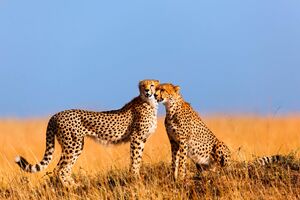
The Masai Mara
Masai Mara and the Serengeti in Tanzania must share the prize for being the most filmed wildlife districts on the whole continent, if not in the whole world. But this is not the only thing they share, they also share a border and more importantly many free roaming animals, of which the great migration of wildebeest and zebra is the most visible. Around July these animals stream into the reserve from the south and fill the savannah’s grasslands with big game animals, and the air with birds of prey. Typically they will leave the Masai Mara again in October, but the precise timing of the migration does vary from year to year, as it depends on where and when the rain fall which allow new, fresh grass to grow.
Read more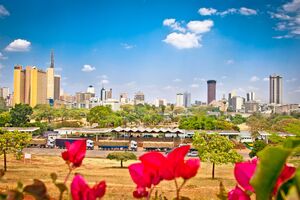
Nairobi
Nairobi is the capital of Kenya, East Africa’s most important business hub and with a population of nearly 4 million inhabitants, amongst the three biggest cities in the region, along with Addis Ababa in Ethiopia and Dar es Salaam in Tanzania. The city also has one of the most important airports on the whole continent, and is the main starting point not only for our Kenyan safaris, but also many safaris to neighbouring countries such as Tanzania, Uganda and Rwanda, even tours to more southern African destinations such as Malawi, Zambia and Zimbabwe, have their African starting point in Nairobi’s airport, with its great connections to these countries.
Read morePrices
The Price Includes
- Return flights from N.Europe - Kenya
- Airport taxes and charges
- Small Group Safari as described in the itinerary
- Accommodation as described
- All meals during the safari
- Safari drives and activities as described
- English speaking driver/guide
- Access to Safari Eksperten’s 24-hour emergency telephone service
The Prices Does Not Include
- Meals not described and all drinks
- Gratuities
- Travel Insurance & cancellation insurance
- Kenyan Visa (USD 50,- pr. person)
- Private excursions
- Vaccinations
- EU-Liability Insurance: EUR 10,- pr. person
- Everything else not listed under “the price includes"



